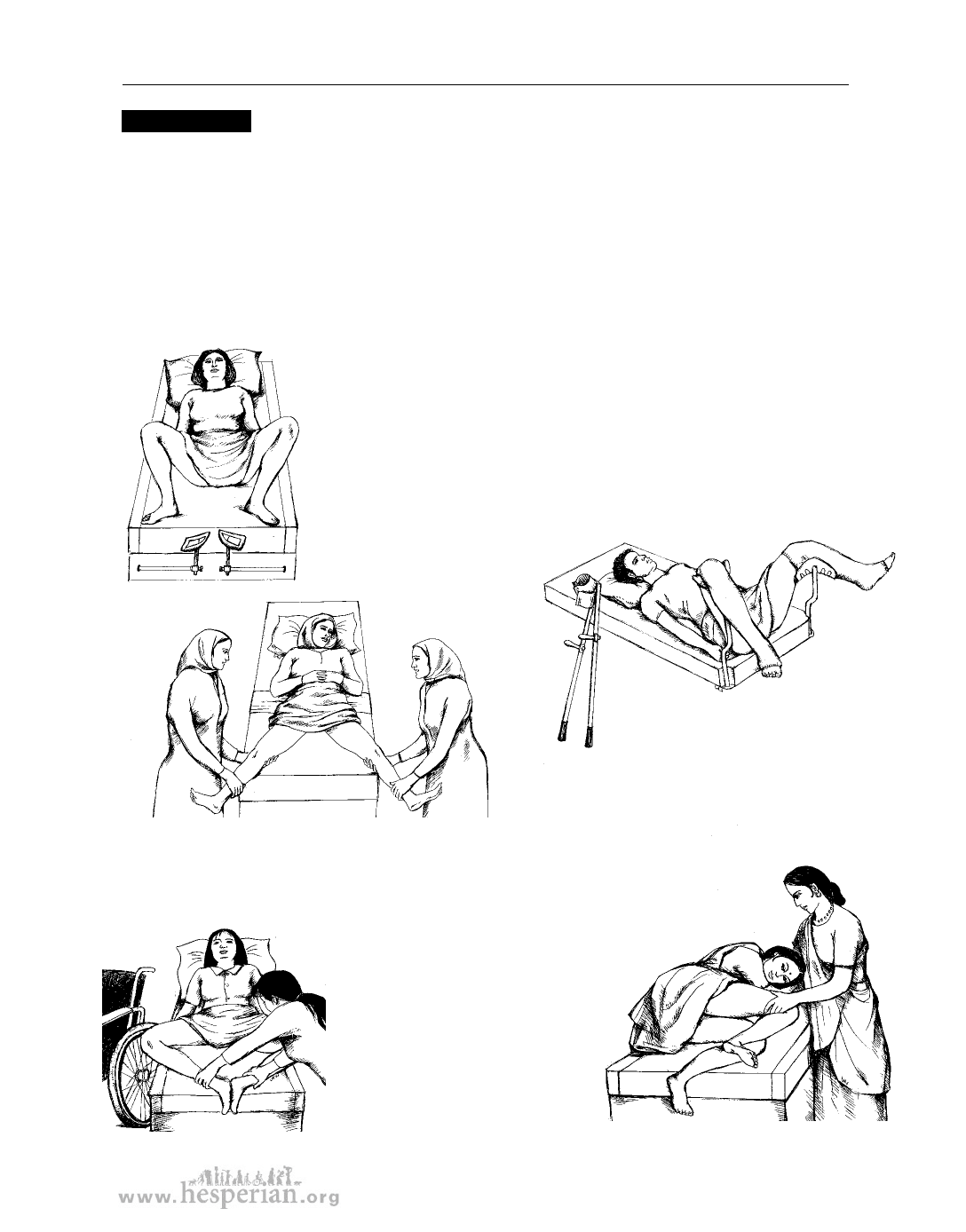
The pelvic exam 133
IMPORTANT If you examine a woman with a spinal cord injury, watch for signs of
dysrelexia and be prepared to stop the exam. Dysreflexia is a medical emergency. The
high blood pressure can cause seizures or bleeding inside the brain. Do not leave a person
with dysreflexia alone. For signs and treatment of dysreflexia, see pages 117 to 119.
Positions FOR a pelvic exam
If you cannot separate your legs easily, this does not mean you cannot have the
exam. Talk to the health worker about different positions that will work for your
body. Here are some positions many women with physical disabilities use:
Women who have trouble with their
hips may find this position easier. This
position is good if there is no one to
hold your feet, because many women
can keep their legs in this position
without tightening their muscles.
Some exam tables have places for a
woman’s feet to rest. Many women with
disabilities do not use these footrests.
This position works
well for women who
cannot move their
legs on their own. It
can also be good for
women who have
trouble bending their
knees.
Some women use the footrests
for support under their knees
if they are unable to hold their
knees up themselves.
This position is more
comfortable for women
who have trouble
separating their legs.
A Health Handbook for Women with Disabilities 2007